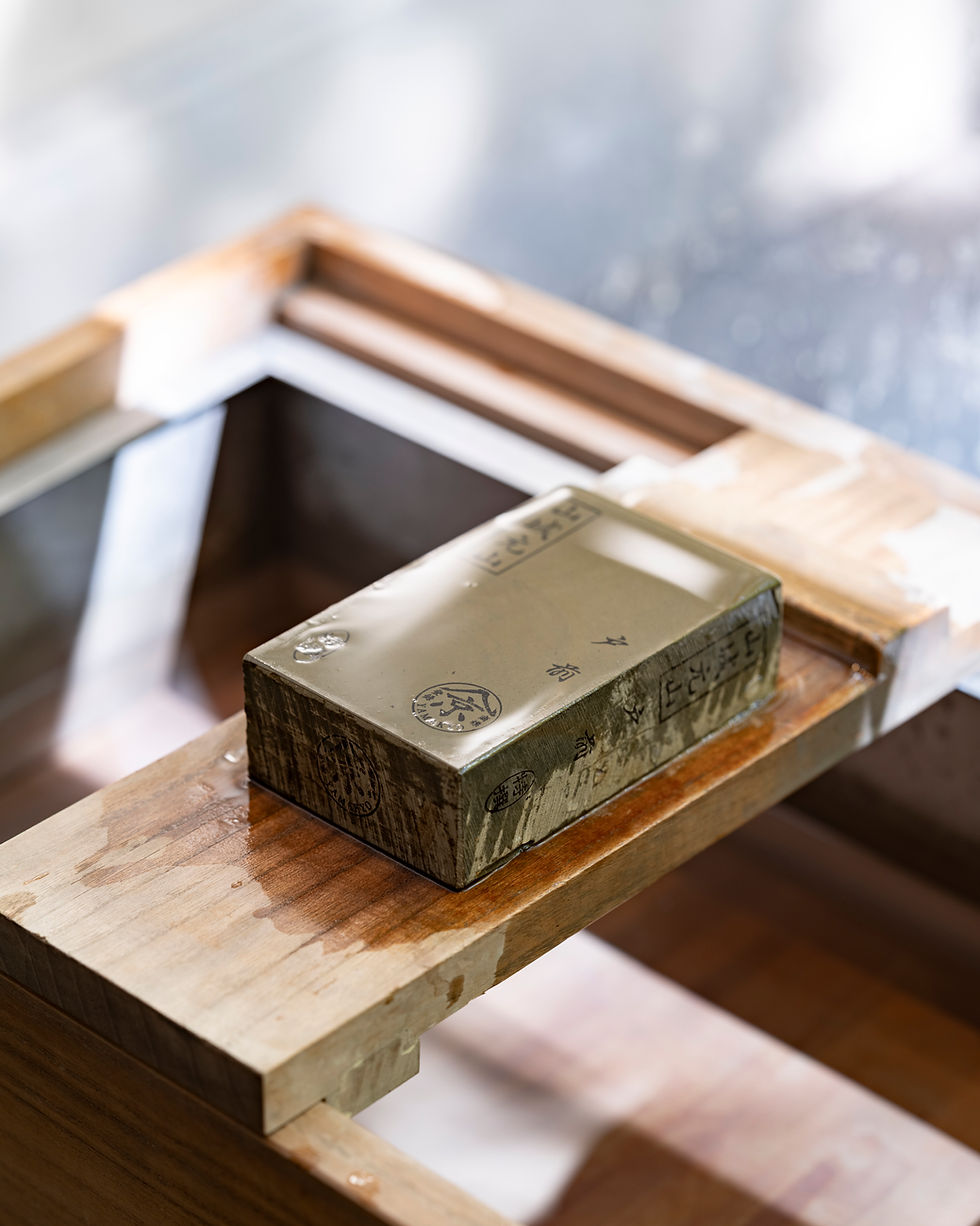Chef or slicing knife (gyuto) with traditional Japanese handle.
Steel: Blue1 (Aogami 1)
Handle: ebony and buffalo horn.
Scabbard: magnolia wood
The chef's knife, or gyuto in Japanese, is the multifunction knife for any preparation.
An exceptional cutting edge, a thin and light blade.
The blade of this knife iscarbon steel forged (type Aogami1 or Blue1 steel), it is a pure steel, with a high carbon content (1.25-1.35%). Its hardness exceeds 60HRC (between 61 and 64) and offers better endurance compared to white steel2.
It is forged and sharpened by the craftsmen of traditional Japanese knives, with the same ancestral methods. It therefore has the ability to hold a very sharp and durable thread.
The blade is very fine in its entirety, this is what gives it its exceptional sharpness and remains light in hand.
The handle inebonyisvery dense and hard. It is a precious wood, used specially on high end knives. It is black and almost merges with the buffalo horn bolster, it also adds weight to the grip.
The wooden handle ofmagnolia, soft and light, is the traditional wood for kitchen knife handles. He is naturally antiseptic and water resistant.
The bolster at the top of the handle is in buffalo horn. Black in most cases, it can be ocher, marbled or all white more rarely.
This knife was forged, sharpened and assembled in the tradition of clean Japanese cutlery in Sakaï (Osaka prefecture), the cradle of Japanese knives.
We work closely with the craftsmen and distributors of our products, do not hesitate to contact us if you have any questions!
Blue Gyuto Washiki Knife1/ 21cm
Care advice
The blade is made of carbon steel, more sensitive to oxidants such as water or acids. It must be cleaned as soon as possible after use, or simply wiped with a cloth if it cannot be washed immediately.
If an oxidation stain appears on the surface, remove it as soon as possible. It remains superficial at first and can be removed with a sponge.
The blade will naturally darken over time and form a protective patina.
From time to time, a complete cleaning can be done during a sharpening for example.
The handle does not require any special treatment.
Wash the knife (blade and handle) by hand with dishwashing liquid and an ordinary sponge, then dry with a towel.
Never dry with hot air. Do not machine wash.
Keep the knife in a dry place.
Avoid hard foods. For hard vegetables (such as pumpkin), or foods that may contain bones or bones, keep a specific knife at home, thicker or at the end of its life, a knife that is not afraid of being a little chipped. Reserve your good knives for safe cuts.
Sharpening or honing:
No knife is forever, they all need to be sharpened at some point. And it is up to each user to determine when it no longer cuts enough and therefore needs to be sharpened. Do not wait too long once it cuts less well, the more it will be worn the longer it will take to restore. Avoid the use of the rifle, prefer sharpening on stone.
To learn or improve stone sharpening, we offer workshops this way!
For any other information, write to us in the contact box.

































